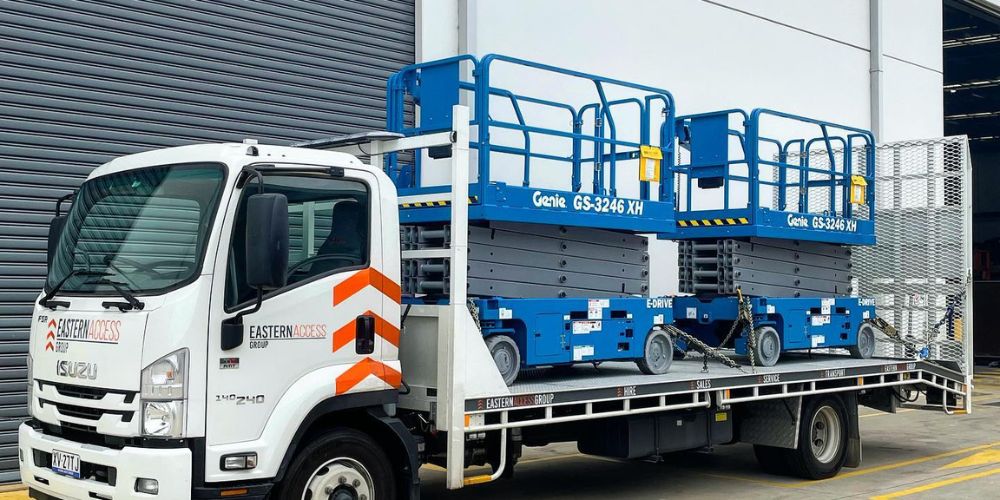Most Common Scissor Lift Accidents and How To Avoid Them
Workers can perform repairs or maintenance in various settings by renting an aerial work platform. However, there are numerous hazards associated with aerial lifts that can cause injury, property damage, and even death; falls, tip-overs, and electrocution can all occur in almost any workplace.
Because when we talk about machines, the first thing that comes to mind is how fantastic and effective they are on construction sites. Nonetheless, they must be treated with dignity. They are, after all, enormously large and heavy! As a result, to be a responsible owner or hirer, you must also understand the potential risks of these machines and take all reasonable precautions to avoid them on your property.
Read further as we discuss some of the most common scissor lift accidents and the best of our expert advice you should consider following when planning to use scissor lifts or any aerial work platform in the future.
Table of Contents

Most Common Scissor Lift Accidents
Tipping
Even as scissor lifts are mainly designed to allow for safe height reach to avoid more risky strategies of completing those tasks, they are not insusceptible if not used properly. Tipping is a severe danger if the scissor lift is not correctly set up and operated. The terrain and load are not adequately considered.
Equipment Defects
Everything from faulty pneumatics to tattered wires to insufficient safety restraints contributes to scissor lift accidents. A thorough maintenance programme detects defective equipment before it becomes a problem. Regular, thorough inspections of your aerial lifts are required to ensure that defective equipment does not cause an accident or death. Begin your maintenance plan immediately; it is only one practical overall safety plan component.
Contact with Power Lines
Electrocution from overhead power lines is a leading cause of injury and death on aerial and scissor lifts. This can occur in a variety of ways. The worker may come in direct contact with the power line, or the equipment may make contact. Not wearing the proper footwear and clothing is another common cause. Workers must always assume that a power line is live, and anyone on the job site who is not directly working with the lines should stay 10 feet away from them.
Being caught between a lift and an object
Unfortunately, workers being injured or killed due to being trapped between an object and the lift itself is relatively standard. This commonly occurs when the bucket is in motion, and the employee becomes trapped between the bucket’s edge and an object. If a lift collapses, workers on the ground may also be crushed.
Falling
This is the leading cause of fatalities in aerial lifts and scissor lifts. Falls can also cause serious injuries. Operator negligence, carelessness, and failure to use proper safety restraints cause falls. When working on AWPs, OSHA recommends using safety harnesses, and your operators should always stay within the safety guardrails.
Equipment Errors Because of Failure to Follow Operating Instructions
Many aerial and scissor lift accidents are caused by human error. If a worker requires an additional inch or two to reach the work area, they can stand on one of the side rails. This is a common cause of injury and death for many people who use aerial and scissor lifts yearly. Other errors include:
- Failing to properly assess a work area before using the equipment.
- Overlooking hazards.
- Not wearing the proper safety gear.
- Operating the lift incorrectly.

How To Avoid Getting Accidents While Operating Aerial Work Equipments
Even though scissor lifts are safe and convenient, there are always risks associated with working at a height. While all Australian states and territories have laws to protect people from injury, accidents still happen.
Here are the best tips we can give you to reduce the risk of getting hurt using scissor lifts and other aerial platforms.
Don't overload the platform.
Overloading the platform is one of the most common mistakes when using scissor lifts. Each scissor lift has specifications that must be strictly followed to avoid accidents, depending on the model and brand. The load of the items that must be positioned inside the platform must be emphasised.
Conduct appropriate equipment training.
Have all employees trained to use scissor lifts? Project managers should know whether all employees involved with or near a scissor lift have received the necessary scissor lift operation training and understand the risks associated with the machines and equipment. Briefing staff members on the job’s specifications and safety regulations is an excellent way to ensure everyone knows the hazards.
Always stay inside the guard rails.
Guard rails were installed to keep workers from falling from the elevated platform. Employees should be reminded not to exceed the guard rails, mainly when the platform is raised to a certain height. However, workers may sometimes need to extend their reach, mainly if the scissor lifts cannot reach a particular peak.
Regular equipment maintenance and protective controls.
It is critical to ensure that the machinery is safe to use before using it. It is critical to creating a safe environment for equipment use regardless of how cautious you are when operating a scissor lift. When considering the safety of everyone on the job site, it is critical to ensure that the scissor lift has been well maintained. Before each use, the scissor lift’s brakes, alarm functions, and rail stability should be tested.
Wear protective gear.
While Occupational Health and Safety do not demand you to wear a harness or other restraints at work, that does not mean you should be complacent. There will always be hazards associated with working at heights, and while the guard rail is the scissor lift’s greatest asset in preventing fall accidents, wearing a harness will prevent any severe fall injuries.
Key Takeaway
Elevated work platforms, regardless of the task at hand, can provide best-raised productivity. As a result, you must examine the task at hand, what you aim to achieve, and which elevated work platform will assist you in completing your job securely and efficiently. Even though there are numerous safety precautions to take when operating a scissor lift, recognising the dangers and constantly taking precautions to avoid them is one of the best ways to avoid serious accidents. When you use a scissor lift for the first time, make sure to follow the safety precautions listed in the manufacturer’s operating manual. Every time you operate a scissor lift, check that all of the safety features are in working order. More often than not, accidents occur when a worker is doing something he or she should not be doing. To get away from these mistakes, may the advice that we mentioned above serves you as the best guide towards a safe aerial platform equipment operation.

